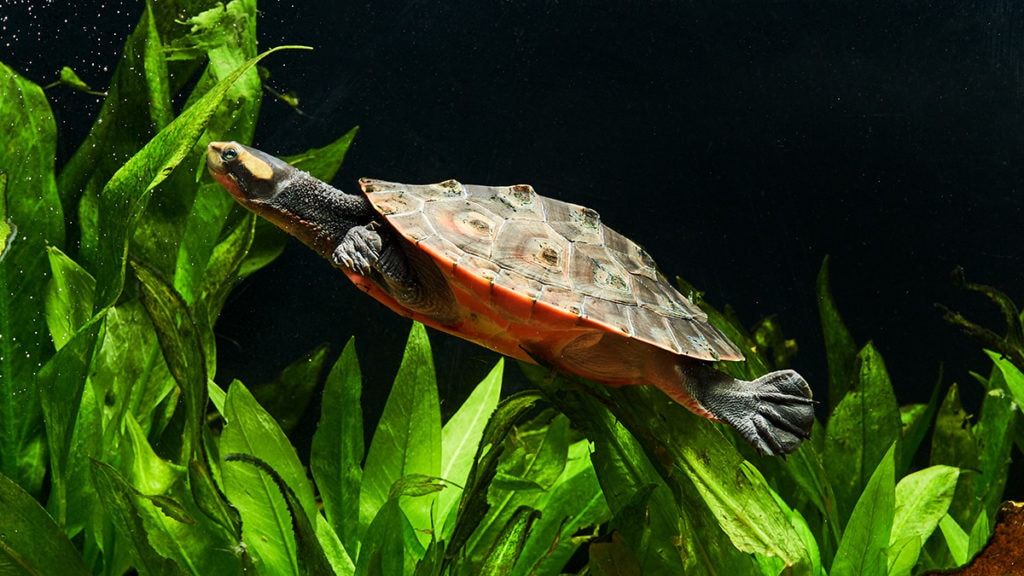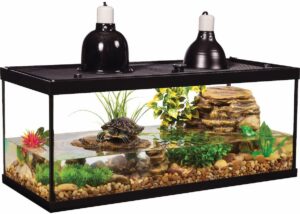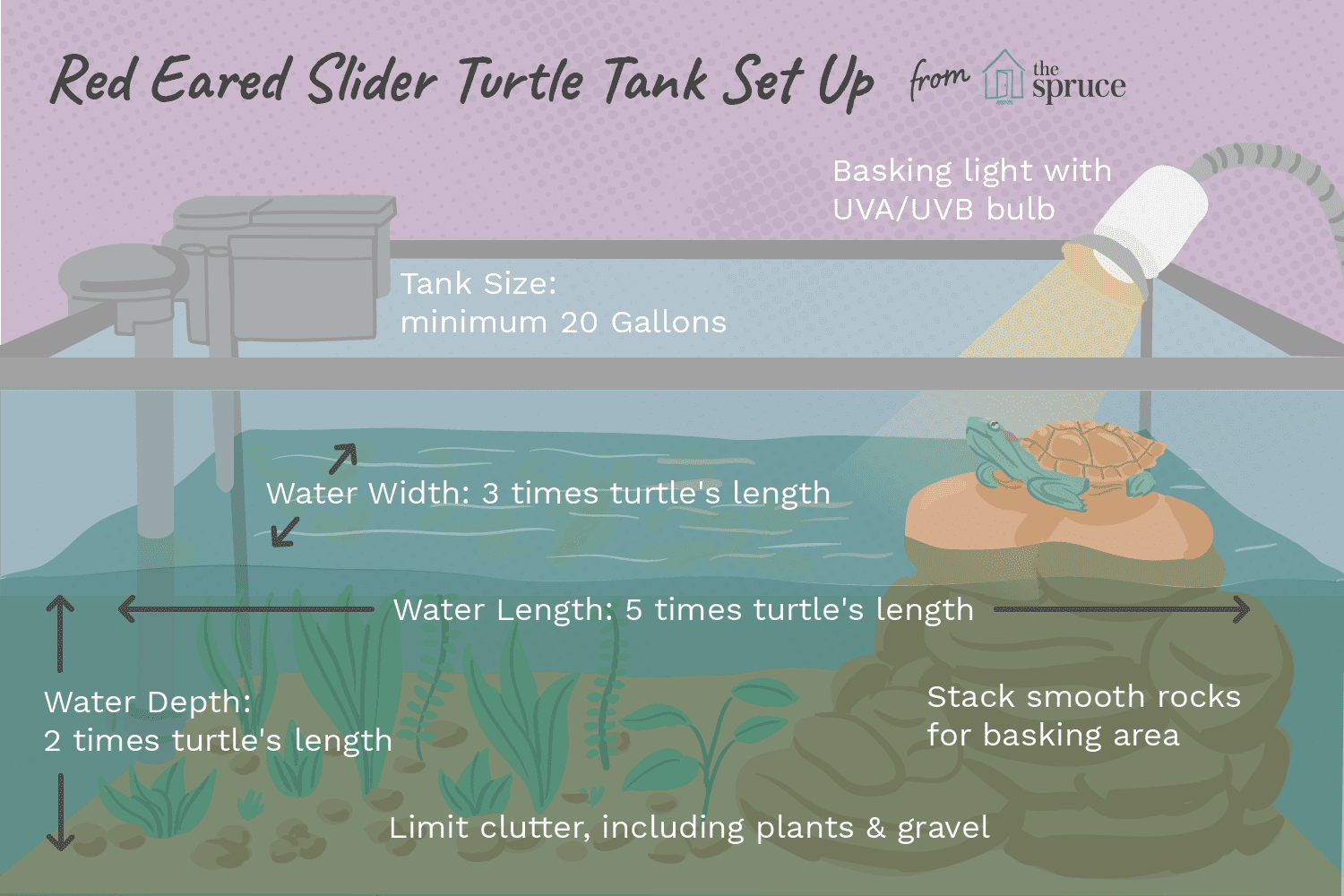The ideal temperature for a turtle tank should be between 75-85°F to maintain their health and well-being. Maintaining proper temperature is crucial for the overall health of your pet turtle.
Inadequate temperature levels can lead to stress, illness, and even death in turtles. Understanding and controlling the temperature in your turtle tank is essential for creating a comfortable and safe environment for your aquatic friends. By providing the right temperature conditions, you can ensure that your turtle thrives and remains healthy.
Let’s explore the importance of maintaining the correct temperature in a turtle tank and how to achieve and maintain optimal conditions for your pet’s well-being.
Importance Of Temperature In Turtle Tanks
Maintaining the right temperature in a turtle tank is crucial for the well-being of your pet. The ideal temperature for a turtle tank should be between 75-85°F to ensure their health and comfort. Keeping a close eye on the temperature and providing a suitable heating source is essential for a thriving turtle environment.
Regulating The Tank Temperature
Impact Of Temperature On Turtle Health
Ideal Temperature Range For Turtle Tanks
When it comes to creating a comfortable and healthy environment for your pet turtle, maintaining the ideal temperature in their tank is crucial. The temperature of a turtle tank plays a significant role in the well-being and overall health of your pet. Understanding the ideal temperature range for turtle tanks and the factors influencing it is essential for providing the best care for your turtle.
Determining The Ideal Range
Before setting up the temperature for your turtle tank, it’s important to understand the ideal temperature range for turtles. The ideal temperature range for turtle tanks is typically between 75°F to 85°F (24°C to 29°C). This range mimics the natural habitat of most turtle species and ensures that your pet remains healthy and active.
Factors Influencing The Temperature
Several factors can influence the temperature of a turtle tank. These include the size of the tank, the type of heating equipment used, the ambient room temperature, and the specific requirements of the turtle species. It’s crucial to consider these factors when determining the ideal temperature range for your turtle tank to provide a comfortable and suitable environment for your pet.
Heating Options For Turtle Tanks
Maintaining the ideal temperature in a turtle tank is crucial for their well-being. Providing heating options like a basking light or underwater heater can help achieve the recommended temperature range of 75-80°F for most turtle species. Monitoring and adjusting the temperature regularly is essential to ensure a comfortable and healthy environment for your pet turtle.
Heating is essential to maintain a comfortable environment for your pet turtles. The right temperature ensures that your turtles stay healthy and happy. There are various heating options available for your turtle tank, and each has its own advantages and disadvantages. In this post, we will discuss the different heating options for your turtle tank, including under tank heaters, heat lamps, and basking bulbs.Under Tank Heaters
Under tank heaters are placed under the tank to provide heat from the bottom. They are an excellent option for aquatic turtles that require a basking area. Under tank heaters are easy to install and use. They are also cost-effective and energy-efficient. However, they are not suitable for all turtles as they only provide heat from the bottom and do not mimic the natural sunlight that turtles need.Heat Lamps And Basking Bulbs
Heat lamps and basking bulbs are commonly used for turtle tanks. These lamps provide heat and light, which is essential for the growth and health of your turtles. Basking bulbs are used to create a basking area where turtles can rest and warm themselves. Heat lamps and basking bulbs are available in different wattages and types, so you can choose the one that suits your turtle’s needs. However, heat lamps and basking bulbs can be expensive to run and may require frequent replacement. In conclusion, choosing the right heating option for your turtle tank depends on the type of turtle you have and your budget. Under tank heaters are a cost-effective and energy-efficient option, while heat lamps and basking bulbs provide heat and light that mimics natural sunlight. Whatever option you choose, make sure that you monitor the temperature regularly to ensure that your turtles are comfortable and healthy.Monitoring And Adjusting Tank Temperature
Monitoring and adjusting the temperature of a turtle tank is crucial for the health and well-being of your pet. Turtles are ectothermic creatures, meaning they rely on their environment to regulate their body temperature. Therefore, it is essential to maintain the appropriate temperature in the tank to ensure your turtle remains healthy and active.
Using Thermometers
Regularly monitoring the temperature of the turtle tank is essential to ensure it stays within the optimal range for your specific turtle species. Utilizing reliable thermometers designed for aquatic environments is highly recommended. Place the thermometers at both the warm and cool ends of the tank to accurately gauge the temperature gradient.
Making Necessary Adjustments
If the temperature deviates from the ideal range, it is important to take prompt action. Ensure the heat source, such as a basking lamp or heater, is functioning properly. Adjust the settings as needed to maintain the appropriate temperature. Additionally, consider the ambient temperature of the room where the tank is located, as this can impact the overall temperature of the water.
Challenges In Maintaining The Right Temperature
External Temperature Changes
External temperature changes can pose a significant challenge in maintaining the right temperature in a turtle tank. Fluctuations in room temperature, especially during extreme weather conditions, can impact the water temperature in the tank. Turtles are ectothermic, meaning they rely on external sources of heat to regulate their body temperature. As a result, sudden drops or spikes in ambient temperature can lead to stress or health issues for turtles, making it essential to monitor and adjust the tank temperature accordingly.
Multiple Turtles In The Same Tank
Housing multiple turtles in the same tank can also present challenges in maintaining the ideal temperature. Each turtle may have its preferred temperature range, and the presence of multiple turtles can create variations in the water temperature due to their individual heat output and activity levels. This can make it challenging to ensure that the entire tank maintains a consistent and suitable temperature for all the turtles. Regular monitoring and potential adjustments may be necessary to accommodate the diverse temperature needs of multiple turtles in a shared tank.
:strip_icc()/keeping-water-in-your-turtle-tank-clean-1238362_v3-5be49beb46e0fb0051172bab.png)
Credit: www.thesprucepets.com
Consequences Of Incorrect Tank Temperature
Incorrect tank temperature can lead to health issues for turtles. The ideal temperature for a turtle tank should be between 75-80°F to maintain their well-being and vitality. Fluctuations in temperature can cause stress and impact the overall health of your pet turtle.
Maintaining the right temperature in a turtle tank is crucial for the well-being of your pet. Failure to do so can lead to various health and behavioral issues that can be detrimental to your turtle’s health. Below are some of the consequences of incorrect tank temperature.Health Issues For Turtles
Turtles are cold-blooded animals, which means they rely on external heat sources to regulate their body temperature. If the water temperature in their tank is too low, it can slow down their metabolism and compromise their immune system, making them more susceptible to diseases and infections. On the other hand, if the water is too warm, it can cause heat stress, leading to dehydration, respiratory problems, and even death.Behavioral Changes In Turtles
Apart from health issues, incorrect tank temperature can also affect your turtle’s behavior. If the water is too cold, your turtle may become lethargic, lose its appetite, and become less active. On the other hand, if the temperature is too warm, your turtle may become agitated, restless, and exhibit signs of distress. In some cases, it may even become aggressive towards other turtles or tank mates. To prevent these issues, it’s important to maintain the right temperature in your turtle tank. You can use a thermometer to monitor the water temperature and adjust the heating or cooling system accordingly. It’s also advisable to consult a veterinarian or a turtle expert to determine the optimal temperature range for your specific species of turtle. In conclusion, maintaining the correct temperature in your turtle tank is crucial for your pet’s health and well-being. Failure to do so can lead to various health and behavioral issues that can be detrimental to your turtle’s health. Therefore, it’s important to take the necessary measures to ensure your turtle’s tank is at the right temperature.Expert Recommendations On Turtle Tank Temperature
Advice From Veterinarians
Veterinarians recommend maintaining a turtle tank temperature between 75-85°F (23-29°C) for most turtle species. This temperature range supports their metabolic functions and overall well-being.
Tips From Experienced Turtle Keepers
- Ensure the tank has a basking area where the temperature is around 90-95°F (32-35°C) to allow turtles to regulate their body temperature.
- Use a reliable thermometer to monitor the water temperature regularly and make necessary adjustments to the tank’s heating equipment.
- Consider using a submersible aquarium heater to maintain the water temperature within the recommended range.
- Avoid sudden temperature fluctuations, as they can stress turtles and compromise their health.

Credit: be.chewy.com

Credit: www.turtletimes.com
Conclusion
Maintaining the right temperature in your turtle tank is crucial for their well-being. Remember, consistency is key. By ensuring the water temperature falls within the recommended range, you are creating a comfortable and safe environment for your aquatic friends. Keep monitoring and adjusting as needed for a happy and healthy turtle habitat.






Leave a Reply